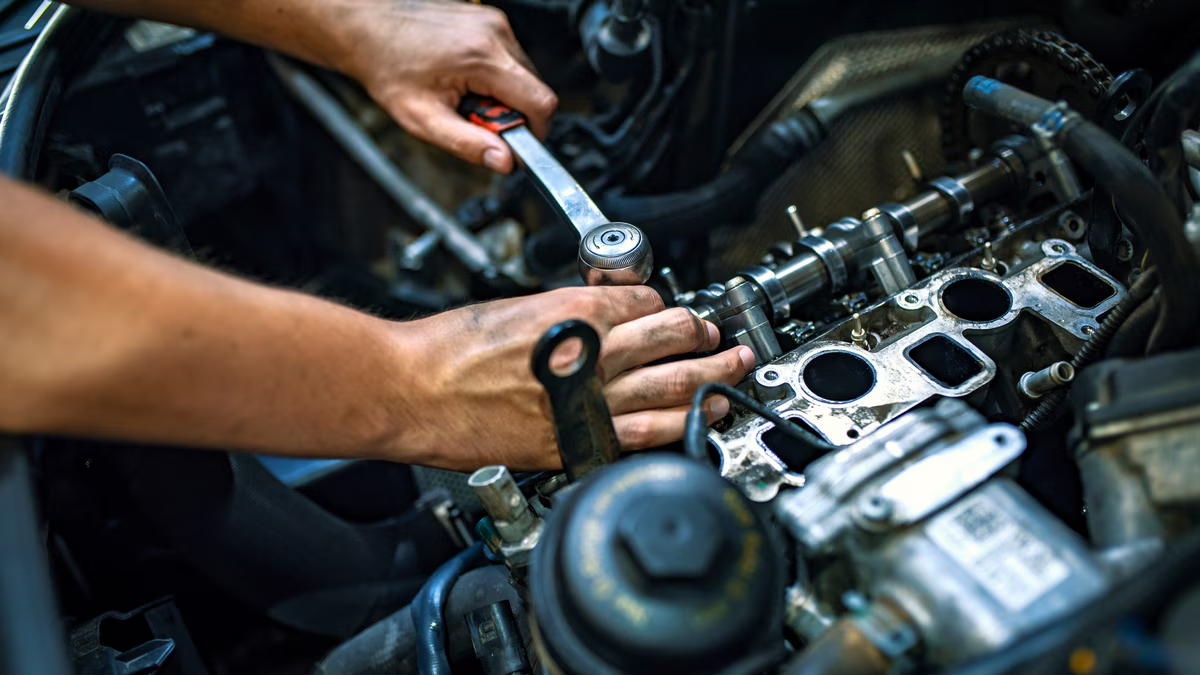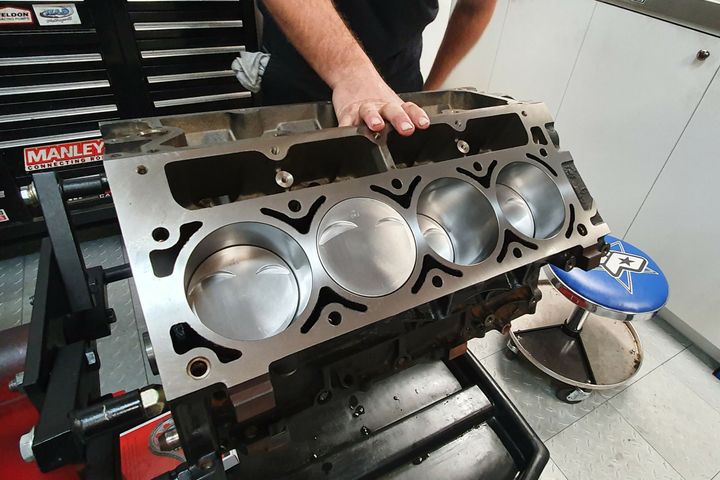


Rebuilding an engine is a complex and labor-intensive task that requires a combination of mechanical skills, specialized tools, and meticulous attention to detail. While it is certainly a challenging endeavor, it is not an impossible feat for an experienced DIY enthusiast with the right knowledge and resources. This comprehensive guide delves into the intricacies of engine rebuilding, providing insights into the difficulty level, essential skills and knowledge, tools and equipment needed, step-by-step processes, common pitfalls, cost and time considerations, and the pros and cons of professional versus DIY approaches.

Engine rebuilding is generally considered a difficult task, with most experts rating it as an 8 or 9 out of 10 in terms of complexity. The table below outlines the key factors contributing to the difficulty level:
| Factor | Description |
|---|---|
| Disassembly and Reassembly | Involves carefully disassembling and reassembling the engine, keeping track of the order and orientation of numerous components. |
| Inspection and Measurement | Requires thorough inspection and precise measurement of various components to identify wear or damage. |
| Machining and Replacement | Worn or damaged parts may need to be machined or replaced, often requiring specialized services. |
| Adherence to Specifications | Meticulous adherence to manufacturer's procedures and torque specifications is crucial for proper fitment and performance. |
To successfully rebuild an engine, you should possess a strong set of skills and knowledge, as outlined in the following table:
| Skill/Knowledge | Description |
|---|---|
| Mechanical Aptitude | A natural inclination and ability to understand mechanical systems and components. |
| Attention to Detail | The ability to follow instructions meticulously and maintain a high level of precision throughout the process. |
| Engine Components | A good understanding of engine components, their functions, and how they interact with each other. |
| Tool Familiarity | Familiarity with various tools and measuring instruments, such as torque wrenches, dial calipers, and bore gauges. |
An engine rebuild requires a wide array of tools and equipment, ranging from basic hand tools to specialized instruments and access to machining services. The following table lists the essential tools and equipment:
| Category | Tools/Equipment |
|---|---|
| Basic Hand Tools | Wrenches, sockets, pliers, hammers, screwdrivers |
| Specialized Tools | Torque wrenches, piston ring compressor, cylinder honing tools, dial calipers, bore gauges, valve spring compressor, harmonic balancer puller |
| Machining Services | Cylinder boring, crankshaft grinding, valve refacing |
It's important to note that while some tools may already be available in a well-equipped toolbox, others may need to be purchased or rented specifically for the engine rebuild project.
The engine rebuild process is a meticulous and multi-step endeavor that requires careful planning and execution. The following steps outline the general process:
Disassembly: Carefully disassemble the engine, keeping track of the order and orientation of components. Proper organization and labeling of parts are crucial during this stage to ensure accurate reassembly.
Inspection and Measurement: Once disassembled, each component must undergo a thorough inspection and measurement process. This involves checking for wear, cracks, or damage and measuring critical dimensions against the manufacturer's specifications. Components that fall outside the acceptable tolerances must be replaced or machined.
Machining and Replacement of Worn Parts: Based on the inspection and measurement results, worn or damaged components must be either replaced or sent to a machine shop for machining services. This may include cylinder boring, crankshaft grinding, valve refacing, or other processes to restore the components to their original specifications.
Reassembly: With all necessary components replaced or machined, the engine can be meticulously reassembled. This process involves following the manufacturer's recommended procedures and torque specifications to ensure proper fitment and performance.
Final Adjustments: After reassembly, final adjustments may be required, such as setting valve clearances, timing the camshafts, and adjusting the ignition system. These adjustments are critical for ensuring optimal engine performance and longevity.
Despite the best intentions and careful planning, engine rebuilds are susceptible to common pitfalls and mistakes that can compromise the project's success. Some of the most common issues include:
| Mistake/Pitfall | Description |
|---|---|
| Improper Measurement | Inaccurate measurements of critical components can lead to improper fitment, excessive clearances, or interference issues during reassembly. |
| Component Damage | Damage to components during disassembly or reassembly can render them unusable, necessitating costly replacements or additional machining services. |
| Incorrect Installation | Failing to follow the manufacturer's recommended procedures or torque specifications can result in improperly installed components, leading to potential leaks, premature wear, or even catastrophic engine failure. |
| Failure to Follow Torque Specifications | Torque specifications are critical for ensuring proper clamping forces and preventing component damage or failure. Deviating from these specifications can have severe consequences. |
| Contamination and Improper Lubrication | Contamination from dirt, debris, or improper lubrication can lead to premature wear, increased friction, and reduced engine performance or lifespan. |
To mitigate these risks, it is essential to exercise extreme caution, follow instructions meticulously, and seek professional assistance or guidance when needed.
The cost and time required for an engine rebuild can vary significantly depending on several factors, as outlined in the following table:
| Factor | Description |
|---|---|
| Engine Type | The complexity and rarity of the engine can significantly impact the cost of replacement parts and machining services. |
| Extent of Wear | Engines with more extensive wear may require a higher number of replacement parts and machining services, increasing the overall cost. |
| Replacement Parts | The cost of replacement parts, such as pistons, rings, bearings, and gaskets, can quickly add up, especially for high-performance or specialty engines. |
| Machining Services | Machining services, such as cylinder boring, crankshaft grinding, and valve refacing, can be expensive, particularly if multiple components require machining. |
| Specialized Tools | While basic hand tools may already be available, the cost of specialized tools like torque wrenches, piston ring compressors, and cylinder honing tools can be substantial. |
| DIY vs. Professional | A DIY rebuild can save on labor costs but may require a significant investment of time and effort, while a professional rebuild can be more expensive but completed more efficiently. |
On average, a DIY engine rebuild can cost between $500 and $4,000, with the labor cost being the most significant factor if done professionally. In terms of time, a DIY engine rebuild can take several weeks or even months for an inexperienced enthusiast, depending on the complexity of the engine and the availability of tools and resources.
When considering an engine rebuild, individuals must weigh the pros and cons of pursuing a professional service or undertaking the project as a DIY endeavor. The following table compares the advantages and disadvantages of each approach:
| Approach | Advantages | Disadvantages |
|---|---|---|
| Professional Service | - Expert knowledge and experience - Access to specialized equipment - Warranty on workmanship | - Higher cost due to labor charges - Potential for longer turnaround times |
| DIY Rebuild | - Cost savings on labor - Personal satisfaction and learning experience - Ability to work at your own pace | - Requires significant time and effort - Potential for costly mistakes - Limited access to specialized equipment |
Ultimately, the decision to attempt a DIY engine rebuild or have it done professionally depends on your skill level, available resources, and the value you place on your time and effort.

Rebuilding an engine is a challenging but rewarding task that requires careful planning, attention to detail, and access to the right tools and resources. While the process is undoubtedly complex, with the proper knowledge and preparation, an experienced DIY enthusiast can successfully tackle an engine rebuild.
However, it is essential to be aware of the potential pitfalls and limitations, such as improper measurement, component damage, incorrect installation, failure to follow torque specifications, and contamination or improper lubrication. These mistakes can not only compromise the success of the rebuild but also lead to costly repairs or even catastrophic engine failure.
By carefully considering the difficulty level, acquiring the necessary skills and knowledge, investing in the right tools and equipment, and meticulously following the step-by-step process, you can increase your chances of a successful engine rebuild. Additionally, weighing the pros and cons of a professional service versus a DIY approach can help you make an informed decision that aligns with your specific needs and circumstances.
Remember, rebuilding an engine is a labor of love and a testament to your mechanical prowess. With patience, perseverance, and a commitment to excellence, you can breathe new life into your engine and experience the satisfaction of a job well done.
Micrometers, bore gauges, dial indicators, and feeler gauges are essential for precisely measuring engine components like cylinders, crankshafts, and bearing clearances.
Thorough cleaning is crucial to remove debris, sludge, and contaminants that could damage components or compromise the rebuild's integrity.
Machining the engine block ensures that surfaces like cylinder bores and decks are smooth and within specifications for proper sealing and fitment.
Adhering to manufacturer's torque specifications is vital to prevent overtightening or undertightening, which could lead to component failure or leaks.
Inaccurate measurements can result in improper fitment, excessive clearances, interference issues, and potential engine damage or failure.
Cleaning the block after machining removes any debris or residue that could contaminate the reassembly process and compromise the engine's performance.
Assembly lube helps reduce friction and wear during initial startup, preventing premature damage to components.
Following the manufacturer's recommended procedures ensures proper installation, alignment, and timing of components for optimal engine performance and longevity.
Old fasteners like head bolts and nuts may be worn or damaged, increasing the risk of loosening, leaks, or component failure.
Replacing gaskets and seals with new ones ensures proper sealing and prevents leaks, which could lead to oil or coolant loss and potential engine damage.

Sarah isn't your average gearhead. With a double major in Mechanical Engineering and Automotive Technology, she dived straight into the world of car repair. After 15 years of turning wrenches at dealerships and independent shops, Sarah joined MICDOT to share her expertise and passion for making cars run like new. Her in-depth knowledge and knack for explaining complex issues in simple terms make her a valuable asset to our team.












